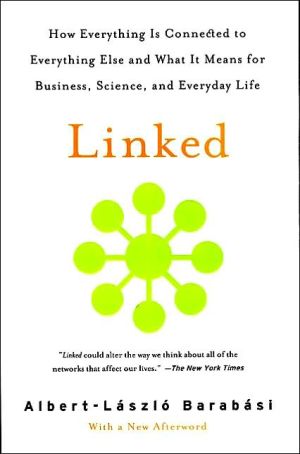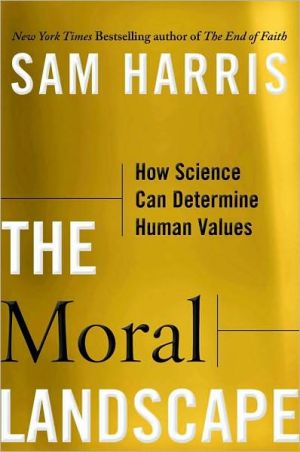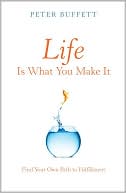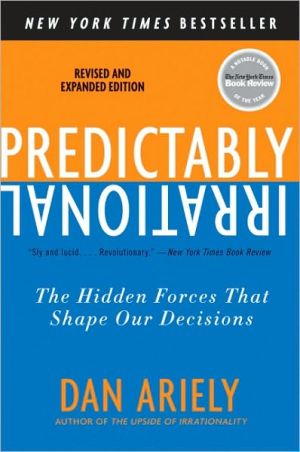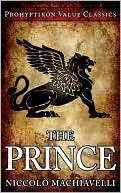Linked: How Everything is Connected to Everything Else what It Means for Business, Science and Everyday Life
A cocktail party? A terrorist cell? Ancient bacteria? An international conglomerate?\ All are networks, and all are a part of a surprising scientific revolution. Albert-László Barabási, the nation’s foremost expert in the new science of networks and author of Bursts, takes us on an intellectual adventure to prove that social networks, corporations, and living organisms are more similar than previously thought. Grasping a full understanding of network science will someday allow us to design...
Search in google:
Albert-Laszlo Barabasi, the nation's foremost expert in the new science of networks, takes us on an intellectual adventure to prove that social networks, corporations, and living organisms are more similar than previously thought. A full understanding of network science will someday enhance our ability to design blue-chip businesses, stop the outbreak of deadly diseases, and influence the exchange of ideas and information. Engaging and authoritative, Linked provides an exciting glimpse into the next century of science and an urgent new perspective on our interconnected world. Christian Science Monitor A pleasure to read.
This book has a simple message: think networks. It is about how networks emerge, what they look like, and how they evolve. It aims to develop a web-based view of nature, society, and technology, providing a unified framework to better understand issues ranging from the vulnerability of the Internet to the spread of diseases. Networks are present everywhere. All we need is an eye for them...We will see the challenges doctors face when they attempt to cure a disease by focusing on a single molecule or gene, disregarding the complex interconnected nature of the living matter. We will see that hackers are not alone in attacking networks: we all play Goliath, firing shots at a fragile ecological network that, without further support, could soon replicate our worst nightmares by turning us into an isolated group of species...Linked is meant to be an eye-opening trip that challenges you to walk across disciplines by stepping out of the box of reductionism. It is an invitation to explore link by link the next scientific revolution: the new science of networks.
The First LinkIntroduction1The Second LinkThe Random Universe9The Third LinkSix Degrees of Separation25The Fourth LinkSmall Worlds41The Fifth LinkHubs and Connectors55The Sixth LinkThe 80/20 Rule65The Seventh LinkRich Get Richer79The Eighth LinkEinstein's Legacy93The Ninth LinkAchilles' Heel109The Tenth LinkViruses and Fads123The Eleventh LinkThe Awakening Internet143The Twelfth LinkThe Fragmented Web161The Thirteenth LinkThe Map of Life179The Fourteenth LinkNetwork Economy199The Last LinkWeb Without a Spider219Acknowledgements227Notes231Index267
\ From Barnes & NobleFrom one of the seminal researchers in the field comes this highly readable explanation of how networks form the foundation of everything from human societies to the living world, physics, and much more. Interconnectedness as a framework for understanding has revolutionized such disparate fields as cancer research and business strategy.\ \ \ \ \ A timely book.\ \ \ Donald KennedyA sweeping look at a new and exciting science. \ —Science Magazine\ \ \ \ \ RainTruly fascinating...Linked is a richly connected book.\ \ \ \ \ NatureThe work is presented in a highly digestible form...Interesting and informative...(an extremely valuable contribution to the popular-science literature.\ \ \ \ \ Washington PostA lively look at networks through time.\ \ \ \ \ New ScientistEnlightening...[An] extremely well-written entertaining account aimed at the intelligent lay audience.\ \ \ \ \ Seattle Times[Rheingold] paints an excellent picture of a range of transformative technologies.\ \ \ \ \ Washington MonthlyBarabasi's research has some profound implications...An important guidebook.\ \ \ \ \ Time Out New YorkCaptivating...Linked is a playful, even exuberant romp through an exciting new field.\ \ \ \ \ New York TimesWell written...an intellectual detective journey.\ \ \ \ \ Christian Science MonitorA pleasure to read.\ \ \ \ \ Detroit Free PressLinked is the best choice for the layperson,because [Barabasi] minimizes the math and writes elegantly.\ \ \ \ \ Washington Business ForwardGrounded in research...[ Smart Mobs is] well-written and concise and will leave you feeling a little more connected yourself.\ \ \ \ \ Network WorldTime spent reading [Linked] will be among the most entertaining, mind-expanding, and thought-provoking hours you'll spend.\ \ \ \ \ Nature ImmunologyAn engaging voyage into the realm of networks.\ \ \ \ \ Publishers WeeklyInformation, disease, knowledge and just about everything else is disseminated through a complex series of networks made up of interconnected hubs, argues University of Notre Dame physics professor Barab si. These networks are replicated in every facet of human life: "There is a path between any two neurons in our brain, between any two companies in the world, between any two chemicals in our body. Nothing is excluded from this highly interconnected web of life." In accessible prose, Barab si guides readers through the mathematical foundation of these networks. He shows how they operate on the Power Law, the notion that "a few large events carry most of the action." The Web, for example, is "dominated by a few very highly connected nodes, or hubs... such as Yahoo! or Amazon.com." Barab si notes that "the fittest node will inevitably grow to become the biggest hub." The elegance and efficiency of these structures also makes them easy to infiltrate and sabotage; Barab si looks at modern society's vulnerability to terrorism, and at the networks formed by terrorist groups themselves. The book also gives readers a historical overview on the study of networks, which goes back to 18th-century Swiss mathematician Leonhard Euler and includes the well-known "six degrees phenomenon" developed in 1967 by sociology professor Stanley Milgram. The book may remind readers of Steven Johnson's Emergence and with its emphasis on the mathematical underpinnings of social behavior Malcolm Gladwell's The Tipping Point (which Barab si discusses); those who haven't yet had their fill of this new subgenre should be interested in Barab si's lively and ambitious account. (June) Copyright 2002 Cahners Business Information.\ \
